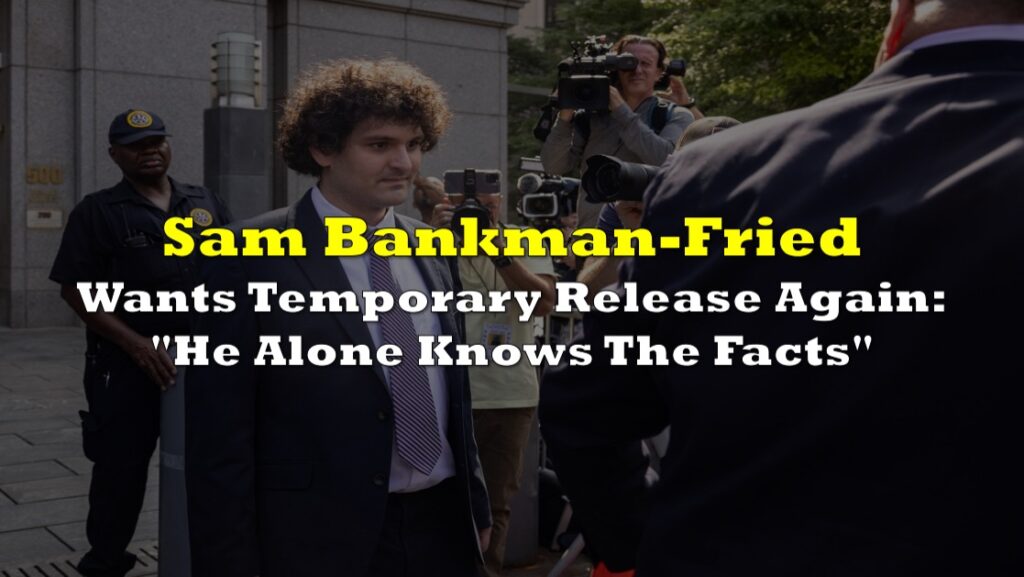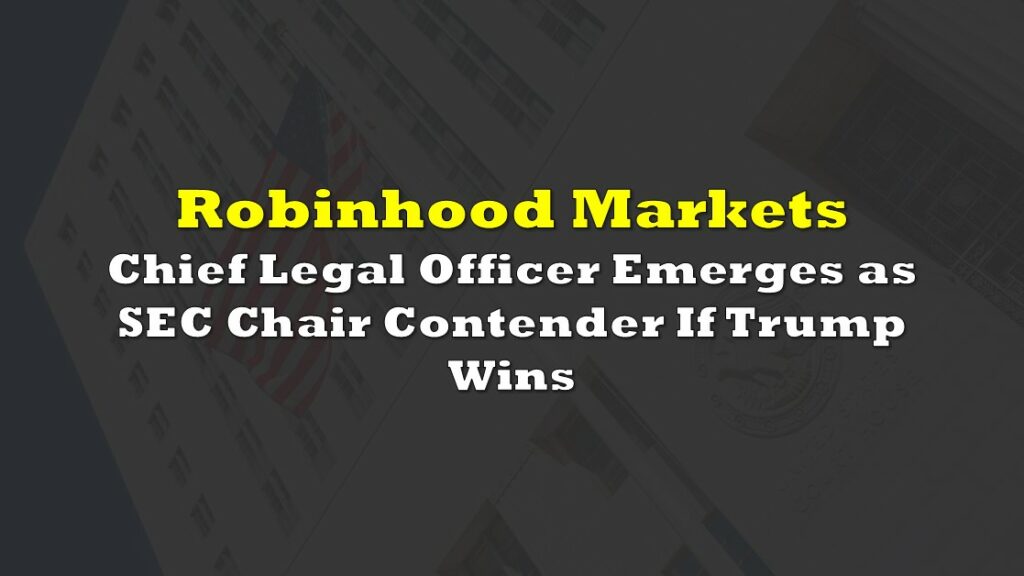The regulatory agency alleges that the former FTX chief “improperly diverted customer assets” since day 1.
Adding to the list of authorities going after the failed crypto exchange FTX founder Sam Bankman-Fried is the US Securities and Exchange Commission. The regulatory body filed charges of fraud against the crypto personality with the New York District Court.
“From at least May 2019 through November 2022, Bankman-Fried engaged in a scheme to defraud equity investors in FTX Trading… at the same time that he was also defrauding the platform’s customers,” the complaint started.
The agency claims that unbeknownst to FTX investors, “Bankman-Fried was orchestrating a massive, years-long fraud, diverting billions of dollars of the trading platform’s customer funds for his own personal benefit and to help grow his crypto empire.”
The SEC covered in the complaint much of what is already public knowledge: FTX used its customer deposits to extend a loan to sister hedge fund Alameda Research. The fund then used these to place risky bets from which it sustained losses, coupled with the crypto winter crash this year. All these pushed FTX to endure liquidity crunches, which led to its eventual bankruptcy.
However, what is new is the agency’s confirmation that the FTX and Alameda engagement is a fraudulent scheme “from the inception of FTX.”
“But from the start, Bankman-Fried improperly diverted customer assets to his privately-held crypto hedge fund, Alameda Research (“Alameda”), and then used those customer funds to make undisclosed venture investments, lavish real estate purchases, and large political donations,” the complaint read.
When it became clear that FTX and Alameda could not make customers whole, SEC said Bankman-Fried “continued to misappropriate FTX customer funds.” He directed hundreds of millions more in FTX customer funds to Alameda, which he then used for additional venture investments and for “loans” to himself and other FTX executives.
Contrary to what Bankman-Fried’s supposed testimony at a House Financial Services Committee hearing–and what he repeatedly claimed throughout his apology tour–the former FTX chief “remained the ultimate decision-maker at Alameda.”
“Bankman-Fried remained the ultimate decision-maker at Alameda, even after [Caroline Ellison and Sam Trabucco] became co-CEOs in or around October 2021. Bankman-Fried directed investment and operational decisions, frequently communicated with Alameda employees, and had full access to Alameda’s records and databases,” the SEC complaint said.
In the transcript of what would be his testimony, Bankman-Fried wrote that because “[he] was not running Alameda, [he] was not aware of some of the critical events at the time.”
Misrepresenting risk
The SEC complaint’s focus is the $1.8 billion equity raised by Bankman-Fried from investors who were led to believe that FTX had appropriate controls and risk management measures.
But the commission said that FTX “had poor controls and fundamentally deficient risk management procedures” from its inception.
“Assets and liabilities of all forms were generally treated as interchangeable, and there were insufficient distinctions between the assignment of debts and credits to Alameda, FTX, and executives, including Bankman-Fried, Wang, and Singh,” the filing described.
The SEC contrasts this with Bankman-Fried and FTX’s pronouncements to the public that the exchange is an “industry-leading brand” and is the “cleanest brand in crypto.”
“If you compare that to what happened on FTX or other major cryptocurrencies in use today, there is complete transparency about the full open interest. There is complete transparency about the positions that are held. There is a robust, consistent risk framework applied,” the filing quoted Bankman-Fried’s remarks at a December 2021 hearing of the House Committee on Financial Services.
Bankman-Fried also repeatedly touted FTX’s automated risk mitigation protocols— which he called FTX’s “risk engine,” the commission said. But in reality, “these statements were materially false and misleading.”
“Bankman-Fried did not reveal that the automatic risk engine did not apply to the accounts of its most important customer—Alameda… One of the special benefits that Bankman-Fried afforded Alameda was that its collateral on deposit was allowed to fall below FTX’s required margin level without FTX liquidating any part of Alameda’s portfolio,” the SEC said in its filing.
The commission also quoted Bankman-Fried in one of his barrage of interviews following the FTX implosion, saying he admitted the lack of risk mitigation measures in a recent December 1 interview.
“I wasn’t even trying, like, I wasn’t spending any time or effort trying to manage risk on FTX,” SEC quoted Bankman-Fried. “What happened, happened—and, if I had been spending an hour a day thinking about risk management on FTX, I don’t think that would have happened.”
Alameda’s role
In his apology tour, Bankman-Fried has been characterizing the FTX implosion as something that stemmed from Alameda’s actions which–while he admits lack of foresight and monitoring on the margins–are technically not his call.
But despite how much Bankman-Fried tried to distance himself from Alameda, the SEC fraud charge filing concluded that he used the hedge fund “to carry out his fraudulent scheme.”
“Bankman-Fried diverted FTX customer funds to Alameda in essentially two ways: (1) by directing FTX customers to deposit fiat currency (e.g., U.S. Dollars) into bank accounts controlled by Alameda; and (2) by enabling Alameda to draw down from a virtually limitless “line of credit” at FTX, which was funded by FTX customer assets,” the SEC said.
As a result, there was no meaningful distinction between FTX customer funds and Alameda’s own funds, according to the commission–adding that the exchange essentially gave the firm a “carte blanche to use FTX customer assets for its own trading operations.”
Then, Alameda did not segregate these customer funds, but instead commingled them with its other assets, and used them indiscriminately to fund its trading operations and Bankman-Fried’s other ventures, said the commission. Alameda was not also required to pay interest on the multi-billion-dollar liability reflected by this internal FTX account.
The commission also described that the FTX platform, by design, “granted special treatment to Alameda” that allowed it to easily divert FTX customer assets to the hedge fund. Bankman-Fried directed software code to be written in or around August 2019, and updated in or around May 2020, that ultimately allowed Alameda to maintain a negative balance in its account, untethered from any collateral requirements.
Also, on multiple occasions, Bankman-Fried directed FTX to increase the amount by which Alameda could maintain a negative balance in its account, giving the firm an unofficial “line of credit.” He also directed that Alameda be exempted from the “auto-liquidation” feature of FTX’s spot margin trading services. This essentially allowed the hedge fund to “fall below the requisite margin levels” without triggering a liquidation.
“All of these special privileges were afforded to Alameda—and only Alameda—at Bankman-Fried’s direction, and all were hidden from investors,” the SEC said. These were not disclosed to FTX investors, the commission added.
In his CNBC interview with Andrew Sorkin, Bankman-Fried essentially claimed that he doesn’t personally have “criminal liability” as he tried to explain how the once-$32 billion crypto exchange FTX was sent into a downward freefall after a run on deposits earlier this month left the company with an $8 billion shortfall, ultimately resulting in bankruptcy.
When asked: “You had power over her and she did what you asked for… Why would anyone believe anything you say when you’re throwing your own lover under the bus?” Bankman-Fried seemed to be uncomfortable with the question.
“Look, I fucked up big, but I’m pretty offended by some parts of that,” he said. “Caroline and I had been together for a while. I don’t control her. I never did. I think it’s really fucked that you would say that I would — that that’s how things work.”
Sources have said Bankman-Fried and Ellison were at times romantically involved–which the FTX founder confirmed although they are not in a relationship anymore. They added that while Ellison ran Alameda, Bankman-Fried was also active, contributing to important trade decisions, according to a source familiar with the company’s inner workings. There did not appear to be much of a barrier between the enterprises at times.
Recently, Ellison–believed to have been hiding in Hong Kong since the FTX implosion–has been spotted in SoHo Manhattan, with reports saying that the former Alameda chief is now being represented by WilmerHale, a reportedly well-connected DC law firm.
“The general consensus is that Caroline Ellison is likely in NY cutting a deal and cooperating with SDNY prosecutors to roll on Sam,” Twitter account @AutismCapital said.
The SEC is charging Bankman-Fried with two counts of fraud, asking the court to order him to pay disgorgement plus prejudgment interest of “all ill-gotten gains” and civil monetary penalties. The agency also requested to prohibit Bankman-Fried from issuing, purchasing, offering, or selling of any securities, including crypto asset securities–except that it should not prevent Bankman-Fried from purchasing or selling securities, including crypto asset securities, for his own personal account.
Information for this briefing was found via the sources mentioned. The author has no securities or affiliations related to this organization. Not a recommendation to buy or sell. Always do additional research and consult a professional before purchasing a security. The author holds no licenses.









